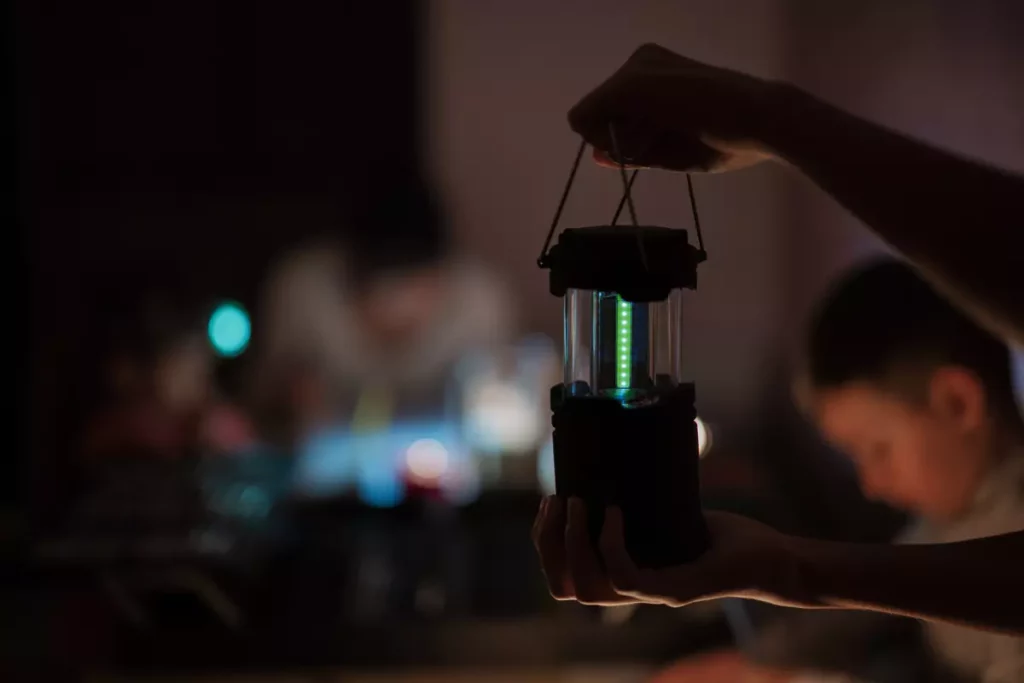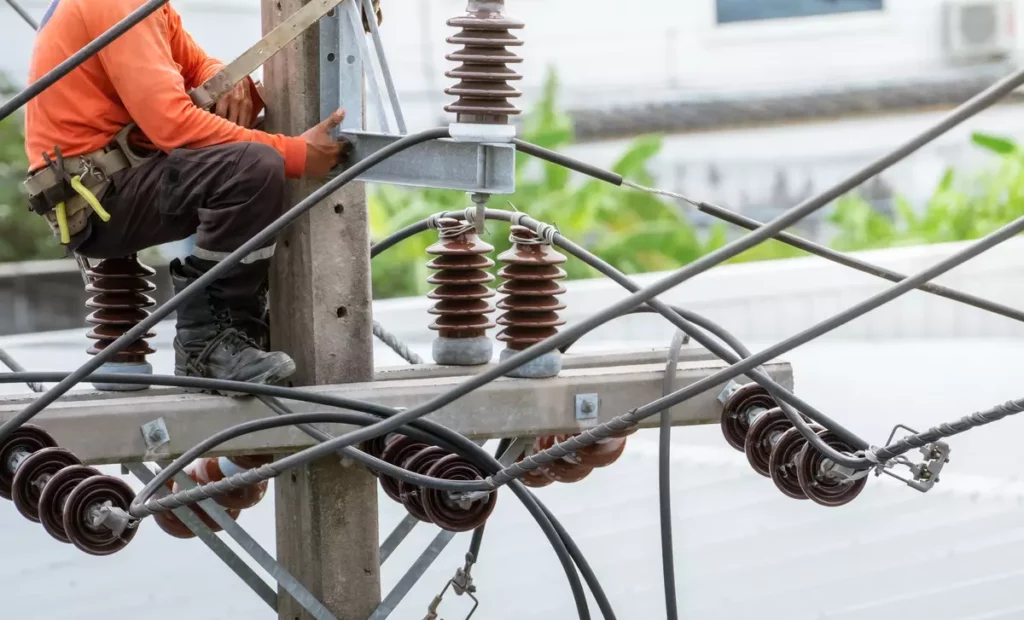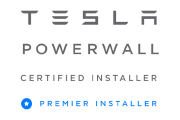“Why are there more blackouts in Southern California, and what can I do about it?” If this question has crossed your mind, you're not alone.
This increase is mainly due to California’s unique challenges, including weather changes, an aging electrical grid, and even wildfires affecting power lines.
Don’t worry, and this isn't just about understanding the problem. It's also about empowering you with practical, easy-to-follow steps to stay ahead of these blackouts.
From building a robust emergency kit to exploring the wonders of solar energy and battery backups, we've got you covered.
Let's dive in and show you how to be prepared for blackouts and meet them with peace of mind.
Overview of Blackout Challenges in Southern California
- Extreme Weather Conditions: Southern California's climate can be tough on the power grid. Scorching summer temperatures increase electricity usage, especially for cooling, which strains the aging power grid. This can result in power outages during peak usage times.
- Wildfires: A significant and growing concern in the California region, wildfires can damage power lines and infrastructure, leading to widespread and sometimes prolonged blackouts. Utilities may also preemptively shut off power to prevent fires during high-risk conditions.
- Aging Infrastructure: Much of the electrical grid in Southern California dates back several decades. This aging infrastructure is less capable of handling the current demand, making it more susceptible to failures that can trigger blackouts.
- Population Growth: Southern California's growing population and expanding urban areas increase the demand on the power grid. In many cases, the infrastructure hasn’t kept pace with this growth, which leads to a higher risk of outages in these densely populated areas.
- Regulatory and Operational Challenges: Regulations and operational decisions, including maintenance schedules and capacity limits, play a role in blackout occurrences. Utility providers may decide to cut power to certain areas in order to balance safety & reliability.
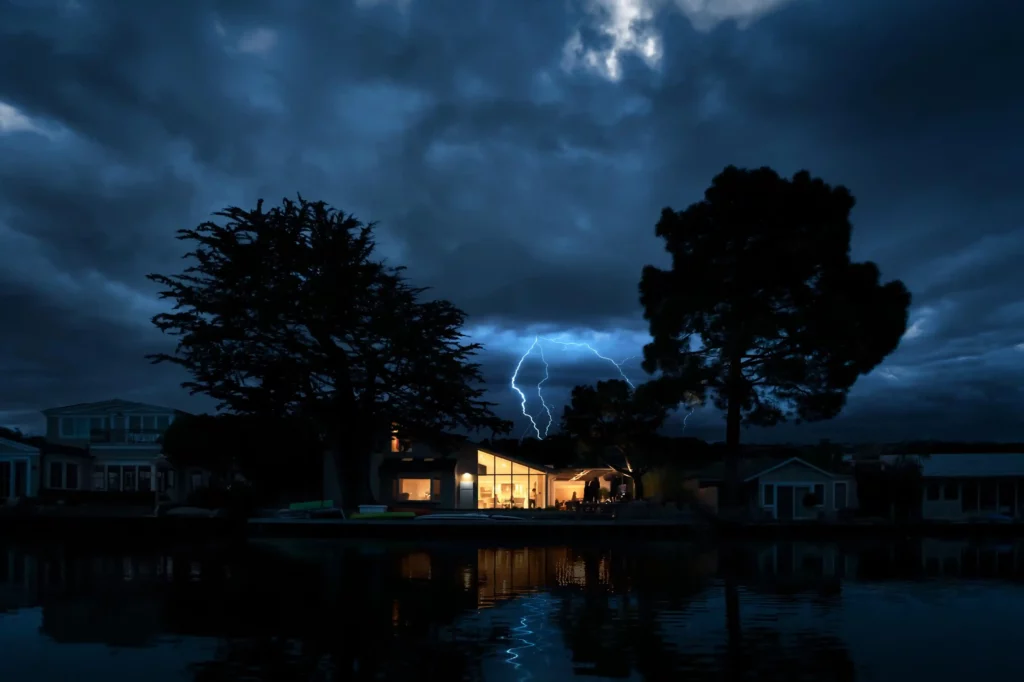
Purpose and Scope of this Blackout Guide
Consider this guide your friendly neighborhood blackout buddy. We're going to walk through everything from why blackouts happen to how to keep your ice cream from melting when they do.
Plus, we'll dive into how solar energy and battery backups can be game-changers during these times.
Think of this as your go-to manual for blackout preparation – making sure your family is ready, comfortable, and safe when the power decides to take a little break.
Understanding Blackouts
Causes and Frequency of Blackouts
Blackouts in Southern California often stem from a combination of factors:
- Overloaded Grid: During peak usage, especially in hot weather, the electricity demand can exceed supply, causing the grid to overload and shut down in certain areas.
- Natural Disasters: Earthquakes, wildfires, and extreme weather events can damage power lines and infrastructure, leading to immediate and prolonged blackouts.
- Equipment Failure: Aging infrastructure, including transformers and power lines, can fail unexpectedly, disrupting the power supply.
The frequency of blackouts has been on the rise, correlating with more extreme weather patterns and growing electricity demand in the region.
Impact on Daily Life and Infrastructure
Blackouts can have a wide-ranging impact:
- Homes and Businesses: Loss of power affects everything from lighting and refrigeration to heating and cooling systems, disrupting daily routines and business operations.
- Public Services: Blackouts can disrupt communication networks, water supply systems, and transportation services, including traffic lights and public transit.
- Health and Safety: Power outages can be particularly challenging for healthcare facilities and can increase risks for vulnerable populations, especially during extreme temperatures.
For example, during the August 2020 heatwave, Southern California experienced rolling blackouts as the regional power grid couldn't keep up with the extraordinarily high electricity demand, primarily due to the extensive use of air conditioning.
Essential Steps to Prepare Before the Lights Go Out
Alright, let's get into preparing for those unexpected blackouts. It's not just about candles and flashlights; it's about feeling confident and secure when the power decides to take a break.
These steps are all about giving you the tools and tips to prepare like a pro.
We will walk through everything so you can make a solid family game plan and keep your home as snug as a bug during any power outage. Ready to become a blackout prep expert?
Building an Emergency Kit
A well-prepared emergency kit is your first line of defense in a blackout. Here's what it should include:
- Flashlights and Batteries: Ensure you have multiple flashlights and a stockpile of batteries.
- Portable Chargers: Keep portable power banks fully charged for your mobile devices.
- Non-Perishable Food and Water: Store at least a three-day water supply and non-perishable food items, like canned food.
- First Aid Kit: Include basic first aid supplies and any essential medications.
- Important Documents: Keep copies of important documents, like IDs and insurance policies in a waterproof and/or fireproof container.
- Multi-Tool or Swiss Army Knife: Handy for various tasks and minor repairs.
- Personal Hygiene Items: Such as soap, sanitizers, wipes, and toiletries.
Developing a Family Emergency Plan
Communication and planning are key:
- Contact Information: Make sure every family member has a list of important contacts, including family, friends, and emergency services.
- Meeting Points: Establish a family meeting point in case you can't return home.
- Evacuation Routes: Familiarize yourself with local evacuation routes and have a plan for pets.
- Roles and Responsibilities: Assign specific roles and responsibilities to each family member. This might include who manages the emergency kit, who is in charge of pets, or who checks on elderly neighbors.
- Communication Plan: Decide on how you'll communicate if cell phones aren't working. Consider battery-operated radios or a designated meeting point as a message center.
- Update Regularly: As family needs and situations change, update your plan accordingly, especially if you move to a new home or have neighborhood changes.
- Special Needs: Plan for the needs of pets, elderly family members, or those with medical conditions.
Home Preparation and Insulation Techniques
Minimize the impact of a blackout with these home preparation steps:
- Insulation: Proper insulation keeps your home cooler in summer and warmer in winter, reducing the need for power-intensive heating and cooling.
- Surge Protectors: Protect your electronics from power surges during storms or when electricity is restored using surge protectors.
- Alternative Lighting: Consider solar-powered or battery-operated lamps for lighting during a blackout.
- Energy-Efficient Appliances: Using energy-efficient appliances can reduce the overall load on your power system, making it easier to manage during outages.
- Window Treatments: Consider thermal curtains or blackout shades to help maintain the temperature inside your home, reducing the need for air conditioning or heating.
- Backup Generator: If possible, a backup generator can provide critical power to essential appliances during extended blackouts.
- Water Conservation: Install water-saving devices to reduce the need for water, as some water supply systems can be affected during power outages.
Managing Extended Blackouts
A blackout doesn't have to be a crisis. This section is all about smart strategies to keep you and your family safe and comfortable when the power is out.
From food safety to effective communication, we've got you covered. Let's dive into how to handle these outages with ease.
Preserving Food and Water
When the power goes out, keeping your food safe and water clean is crucial:
- Keep the Fridge Closed: Open the refrigerator and freezer as little as possible. A closed fridge can keep food cold for about 4 hours, and a full freezer will maintain its temperature for 48 hours if unopened.
- Use Ice Packs: Having ice packs or freezing containers of water ahead of time can help keep food cold during a prolonged outage.
- Safe Water Storage: Store at least one gallon of water per person daily for at least three days for drinking and sanitation.
Staying Safe: Navigating Common Hazards
Safety is paramount during a blackout:
- Avoid Candles: Use battery-powered flashlights or lanterns instead of candles to minimize fire risk.
- Turn Off Major Appliances: Turn off or unplug major appliances to prevent damage from a power surge when electricity is restored.
- Check Carbon Monoxide Detectors: Ensure your carbon monoxide detectors are working, as using generators or grills can increase the risk of carbon monoxide poisoning indoors.
- Secure Your Home: Manually lock all your doors and windows. Blackouts can impact security systems, making homes more vulnerable to break-ins.
Alternative Communication Methods
Staying connected is key:
- Battery-Powered or Hand-Crank Radio: Keep a battery-powered or hand-crank radio for receiving news updates.
- Car Charger for Mobile Devices: Use a car charger to charge mobile phones.
- Establish a Communication Plan: Have a plan for communicating with family members if cell phone networks are down. Consider using text messages, which can be more reliable than phone calls during network congestion.
The Role of Solar Energy and Battery Backup
In an era where consistent energy access is increasingly vital, the synergy between solar energy and battery backup systems stands out as a robust solution, particularly in the California blackout scenarios. This section will unpack how these technologies complement each other and substantially benefit households.
How Solar Panels and Batteries Work
Solar panels and batteries form a cohesive unit, each enhancing the other's capabilities:
- Rooftop Solar Panels: These are the front-line warriors in energy generation, capturing sunlight and converting it into electrical power. This power is then either used in real-time, stored or even sent back to the grid.
- Battery Backup Systems: Batteries play a pivotal role by storing excess energy generated by solar panels. This stored energy becomes particularly crucial during blackouts, acting as a reliable power reserve. Modern solar battery backup systems are more efficient, with longer lifespans and better energy storage capabilities, making them a practical component in home energy systems.
Benefits: Energy Independence and Reliability
Together, solar panels and batteries offer a powerful combination to keep you going during blackouts:
Reliable Energy Source:
With solar panels and battery backups, households are not solely dependent on the grid for electricity. This setup ensures a consistent energy supply, even during peak usage or when the grid is under strain.
For instance, solar panels can power the home during daylight hours while simultaneously charging the batteries. Then, in the evening or during a blackout, the stored energy in the batteries can be used, ensuring a continuous power supply for the essential appliances.
Energy Independence:
Solar and battery systems are especially valuable during unexpected power outages. While traditional backup generators require fuel, which may not always be accessible or sustainable, solar batteries provide a cleaner and more reliable alternative.
In areas prone to natural disasters or frequent blackouts, like Southern California, having a battery backup means you can maintain critical functions like lighting, refrigeration, and communication systems, even when the grid is down. This reliability is not just a convenience; it's a safety net during emergencies.
Cut Energy Expense During None-Emergency:
Beyond emergency reliability, solar energy systems with battery storage also offer everyday financial benefits, especially under Time-of-Use (TOU) rates.
These systems allow homeowners to store solar energy generated during off-peak hours and utilize it during peak times when electricity rates are higher. This capability reduces reliance on expensive grid electricity and maximizes the use of generated solar energy. Consequently, homeowners gain increased control over their energy bills, optimizing solar energy use and minimizing consumption of higher-cost grid power.
This strategic energy management is a key advantage of integrating battery storage with your solar energy system, making it a financially savvy choice for day-to-day energy consumption.
Financial Savings and Environmental Impact
The impact of solar and battery systems extends beyond immediate energy needs:
- Cost-Effective: While there is an upfront investment, the long-term savings on energy bills and potential tax incentives make solar systems with battery backup financially appealing.
- Eco-Friendly: Solar energy is a green power source. By reducing dependence on fossil fuels, these systems contribute to reducing carbon emissions, aligning with environmental sustainability goals.
Sum Up
As we wrap up this guide, it's clear that understanding and preparing for blackouts is essential for safety and peace of mind. We've navigated through various strategies and insights, aiming to empower you with the knowledge to handle power outages effectively.
At Option One Solar, we recognize the importance of reliable and sustainable energy solutions. Our expertise in solar technology is dedicated to providing you with customized services that meet your energy needs. If you're considering the transition to solar energy, we're here to support and guide you through this important decision.
Thank you for exploring this guide with us. Preparation is key, and with Option One Solar, you gain a partner committed to enhancing your energy independence and security. We invite you to contact us for any questions or guidance on your solar energy journey.
Frequently Asked Questions
- Why are Southern California blackouts more frequent now?
- The increase in blackouts is due to several factors: extreme weather conditions straining the power grid, wildfires damaging infrastructure, an aging electrical system unable to meet high demands, and population growth increasing energy consumption. Regulatory and operational decisions also influence the frequency of blackouts.
- What can I do to prepare for a blackout in Southern California?
- To prepare, build a comprehensive emergency kit with essentials like flashlights, batteries, portable chargers, and non-perishable food. Develop a family emergency plan, ensure proper home insulation, and consider investing in solar energy and battery backups for a more reliable power source during blackouts.
- What essentials should I include in my blackout emergency kit?
- Your emergency kit should include flashlights and extra batteries, portable chargers for devices, a three-day supply of water and non-perishable food, a first aid kit, copies of important documents, a multi-tool or Swiss Army knife, and personal hygiene items.
- How can solar energy and battery backups assist during blackouts?
- Solar panels with battery backups provide a reliable alternative energy source during blackouts. Solar panels generate electricity during the day, which can be stored in batteries and used when the grid is down, ensuring continuous power supply for essential appliances.
- What home preparations are recommended for blackout readiness?
- Prepare your home by insulating it properly, using surge protectors to safeguard electronics, and having alternative lighting options like solar-powered or battery-operated lamps. Energy-efficient appliances can also reduce the overall load on your power system during outages.
- How do I ensure food and water safety during extended blackouts?
- Keep your fridge and freezer closed to maintain temperature. A closed fridge can keep food cold for about 4 hours, and a full freezer for 48 hours. Use ice packs to keep food cold and store at least one gallon of water per person per day for drinking and sanitation.
- What are the financial and environmental advantages of solar systems with battery storage?
- Solar systems with battery storage can lead to long-term savings on energy bills and potential tax incentives. They offer energy independence and can be used to manage energy consumption more efficiently, especially under Time-of-Use rates. Environmentally, they reduce reliance on fossil fuels and contribute to lower carbon emissions.

